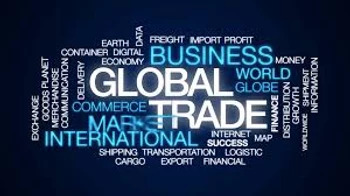
 T/T - Telegraphic Transfer in International Trade
T/T - Telegraphic Transfer in International Trade
Assuming that the samples you receive from the vendor meet your expectations, you plan to place a larger order.
After signing the contract with the supplier, it's time to transfer your money. There are several methods of transferring the amount owed
one of them is T / T payment, which is often used for contracts with business partners from Asia, Africa, South America.
What is a T / T payment and what is the level of risk with it?

What is T/T payment ?
T / T payment, or T / T telegraphic transfer (TT, telegraphic transfer, telex transfer, also referred to as wire transfer ), is one of the payment methods in foreign trade, widely accepted all over the world. In other words, it is a bank transfer, in this case between the importer’s and the supplier’s banks. Next to L / C (letter of credit) payment, T / T is one of the most popular payment methods, especially in Asia.
The use of telegraphic transfer involves a handling fee that varies depending on the regions and banks. Additional costs are the spread , i.e. the difference between the selling and buying rate of the currency on a given day, and the margin. The transfer is usually completed within 1-7 business days.
Risk when paying T/T
International telegraphic transfer is neither the fastest nor the safest method of transferring money.
In the case of T / T, only the buyer, ie the importer, risks. A huge disadvantage of this payment method is the lack of mechanisms that, for example, exist in the SEPA system, protecting the payer from fraud. There is no safe way to make a payment and you should keep this in mind.
For example, the account number to which the transfer should be made may be substituted. When transferring money to such an account, the importer loses money as the payment is not linked to the order.
How to make a payment via telegraphic transfer ?
T / T payment is made from your bank account. You can contact your bank to obtain the form (if not available) and fill it in according to the details provided by the supplier. You can also select T / T as your preferred payment method by placing an order on portals like Alibaba . It is recommended to send a payment confirmation to the contractor.
Each transfer requires the name of the recipient’s bank, the bank’s SWIFT number and the recipient’s bank account number. The SWIFT number is a string of letters and numbers that identifies the institution where the recipient has an account. On the invoice you can find the term BIC ( Business Identifier Code ), which is in fact a number assigned by SWIFT.
When paying by T / T, please choose who pays the additional fees::
- SHA ( share ) means that the importer pays his bank’s handling fee and the recipient pays his own;
- OUR indicates that the sending transfer (importer) pays the transfer service for both parties;
- BEN ( beneficiary ) charges the recipient (supplier) with the required handling fees.
It is possible to add details of a payment intermediary bank, but you have to take into account additional costs. A handling fee may be deducted from the amount paid, as a result of which the recipient of the transfer will receive a reduced amount.
For example, if you have signed a contract with a supplier in China, it is recommended to make a transfer to a corporate account in China. If the supplier provides a private account number instead of a company, the reason may be to avoid taxes. It is possible that this could also be a fraudulent attempt.
Consider before making a transfer to Hong Kong which is a famous tax haven. You should also make sure that the account number you provide identifies the seller’s corporate account. If the account belongs to another company, it is possible that the supplier in question does not have an export license or is only collecting payments from buyers in that account. Unfortunately, in these cases it is difficult to fight for your rights if something goes wrong with the order.
To reduce the likelihood of being cheated, we recommend that you verify the contractor.
How are the payment tranches distributed ?
There are several ways to break down a payment into tranches (paid parts). The first tranche is payable before production starts but after a copy of the commercial invoice has been obtained. The second tranche is realized when the goods are transported, i.e. after the shipping documents are sent. For example, with Incoterms FOB, the T / T payment can be made in parts: as a prepayment and at the time of loading. Usually it is 30% prepayment and 70% after issuing the Bill of Lading, i.e. after loading the goods onto the ship.
Without paying the advance, the chances of starting production are slim. Especially for the first order, the supplier requires a T / T advance payment. Sub-suppliers are usually paid from this prepayment. The sum can be divided into given proportions:
- 0/100 (only reliable or privileged buyers)
- 20/80
- 30/70
- 50/50
- 100/0 (not recommended, production time is usually extended)
What if the payment is “lost” ?
Transfers are not always successful. We present a typical scenario:
- The payer’s bank processes the T / T payment request.
- The recipient’s bank does not record the transferred amount.
- The recipient asks his bank to investigate the matter and the bank does not acknowledge receipt of the transfer.
- The recipient asks the payer to ask their own bank to investigate the matter.
- The payer’s bank tracks the problem and resolves it, the transfer is made to the recipient’s bank or is canceled and a new payment is made. In the latter case, the handling fees cannot be refunded.
Payments are often blocked by typos, e.g. in the name of the recipient’s company. It is not uncommon that the template lacks space to enter the entire company name, which is long, especially in the case of Chinese companies. Depending on the response time of banks and stakeholders, it may take up to two months to resolve the matter.
When should I choose T/T payment ?
For best optimization, use T / T payments for larger orders, only from trusted suppliers. This will reduce unit costs and the likelihood of fraud is low. Performing a telegraphic transfer is a cheaper payment method than a letter of credit, but also less secure.










